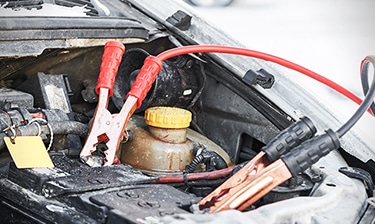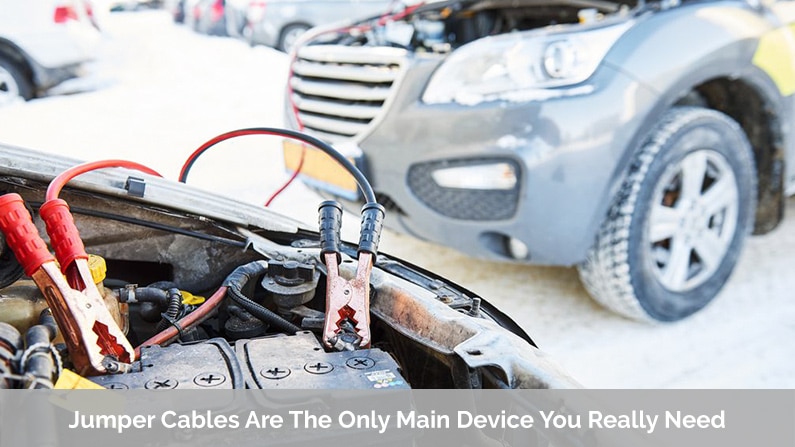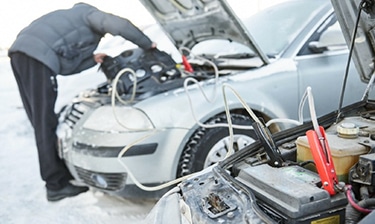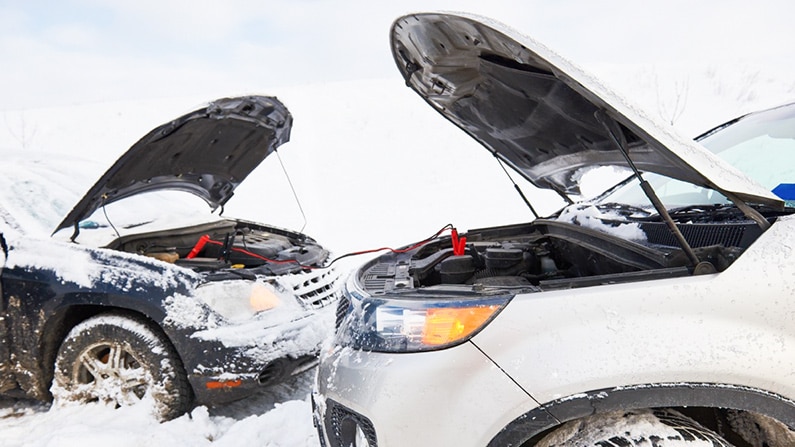
A dead battery is a constant worry of everyone who drives, and it’s bound to happen after years on the road.
Being unable to start your car due to a dead battery can be very frustrating, overwhelming, and expensive – especially if you’re stuck in the middle of nowhere.
In order to avoid the huge hassle of calling a tow service, you can learn to jumpstart your car on your own using a pair of jumper cables.
Before You Begin
● You have a vehicle with an electronic ignition system.
● You have a hybrid, electric, or alternatively-fueled vehicle.
What You’ll Need

Step 1: Prepare Your Engines
Step 2: Attach the Red Clips of the Jumper Cables
You will notice that your jumper clips have a black and a red side. One of each color will be attached to your car, while the others will be attached to your friend’s. First, take a look at one of the red clips. Attach it to the positive terminal on your car’s battery.
You can notice whether or not a terminal is positive or negative in a few different ways:
● It will say, “POS” on the positive terminal side.
● It will have a “+” on the positive terminal side.
● The positive terminal side will be bigger than the negative terminal side.
Step 3: Attach the Black Clips of the Jumper Cables
Then, take the next black clip, and clip it onto any unpainted metal surface in your car. Make sure it is not near your battery. A popular location for this black clip is one of the metal hooks that hold the hood of your car open. Look carefully to find an area that is made entirely of metal, is unpainted, and, especially, is away from your battery.

Step 4: Start the Other Car
By starting the vehicle, the battery will begin to send electric energy into your dead battery, which will help to bring it back to life for a short while.
Step 5: Start Your Car

Now, one of two things will happen at this point. Either your car will start, or it will not. Read below for a list of instructions on what to do in each case.
- Do not turn your car off immediately! Try to keep your car on as long as possible. We recommend driving around for 15 to 20 minutes to recharge your battery, as your battery will recharge while the car is on.
- The jumpstart was successful, but you should still keep a close eye on your battery. After the 20 minutes have passed, you may turn off your car. Attempt to turn it on again and see what happens.
If the car won’t start the next time, then you need to replace your battery.
- Double check that all four jumper cable clips are properly connected. They need to be connected to the proper areas in order for the battery to work.
- Ask the friendly stranger to run their engine for five more minutes. While this is typically enough time to jumpstart a battery, yours may need an extra few minutes to give it the push it needs.
- Try starting your vehicle again. If it simply will not start, you are faced with a completely dead battery. The only solution at this point is to have your car towed and your battery replaced as soon as possible.










